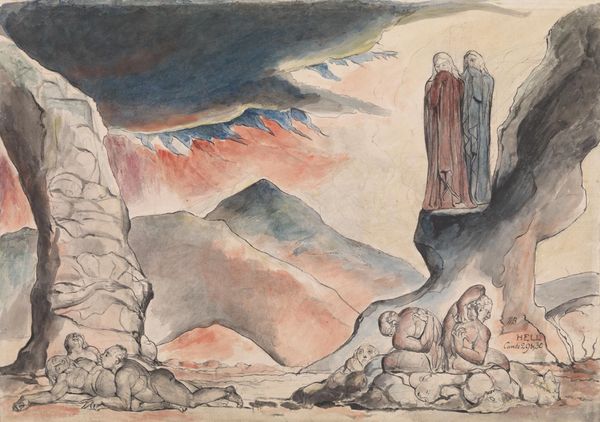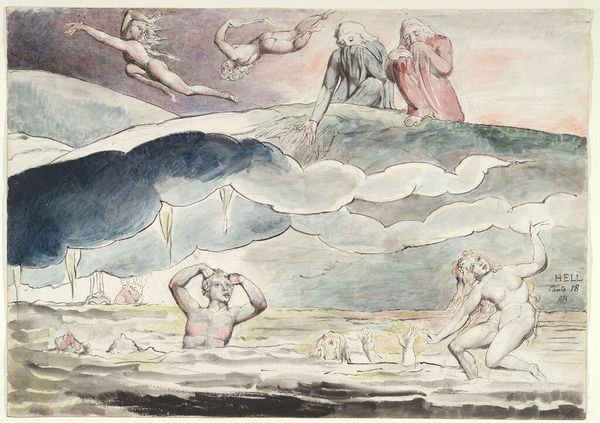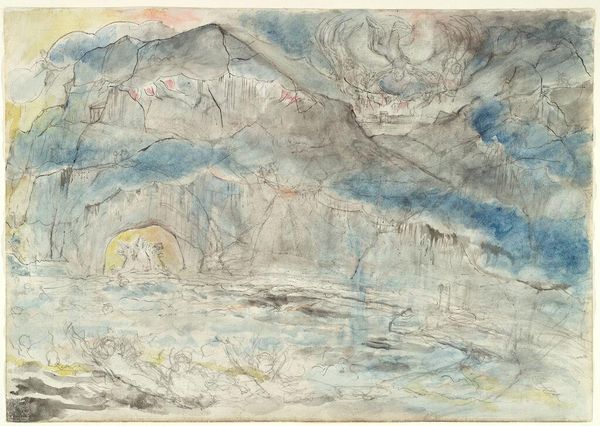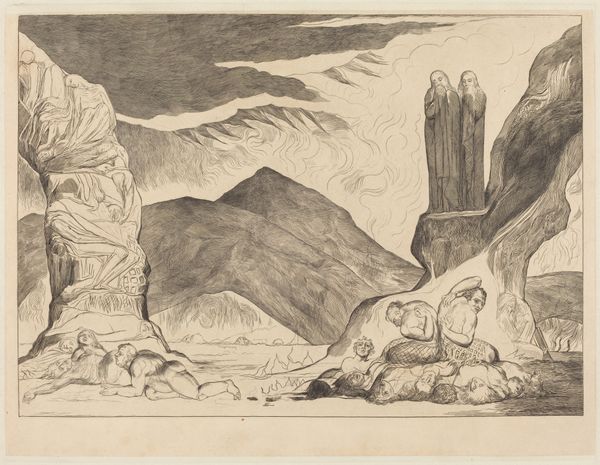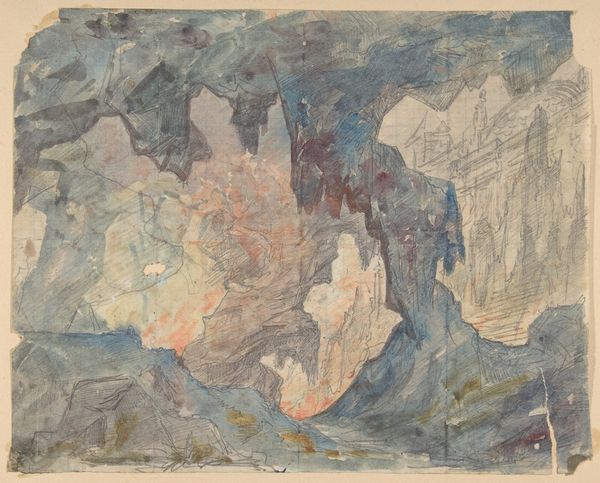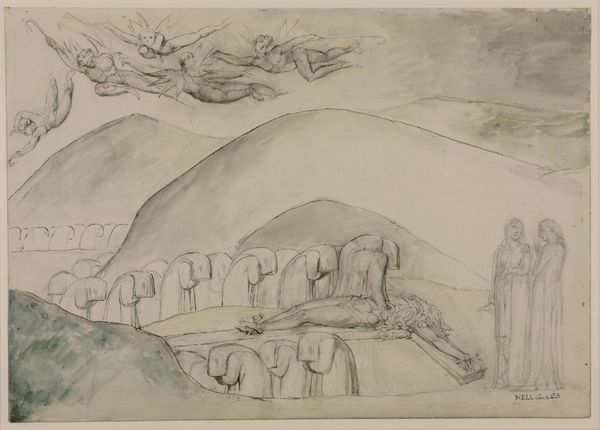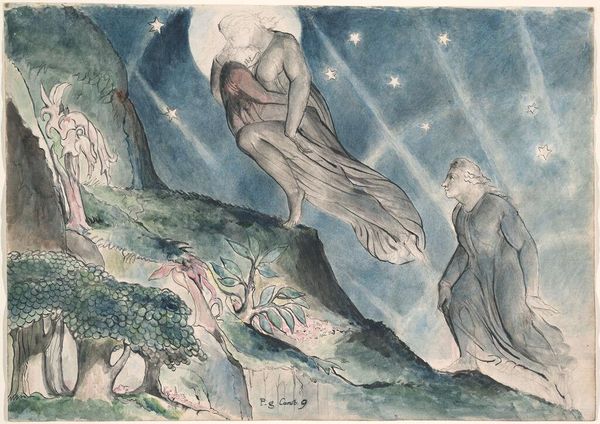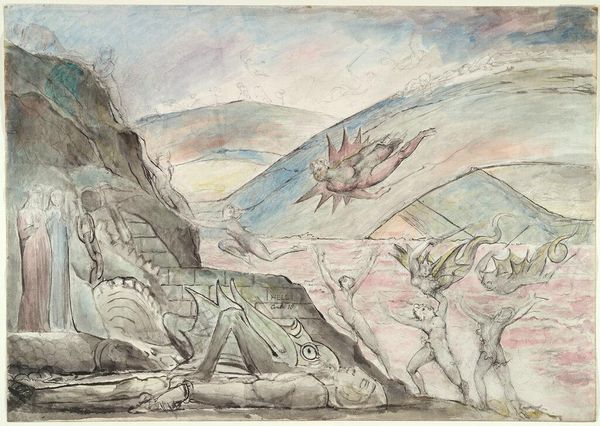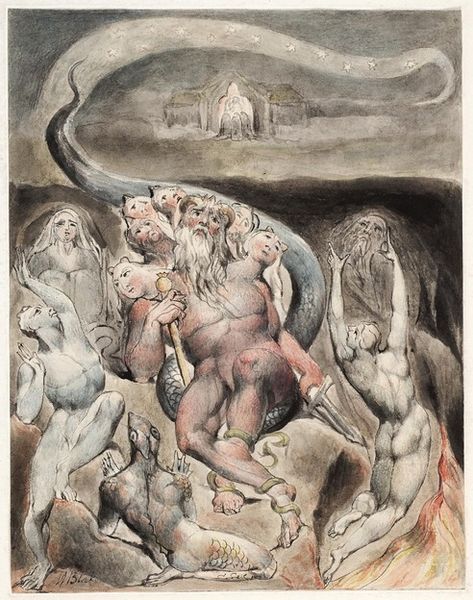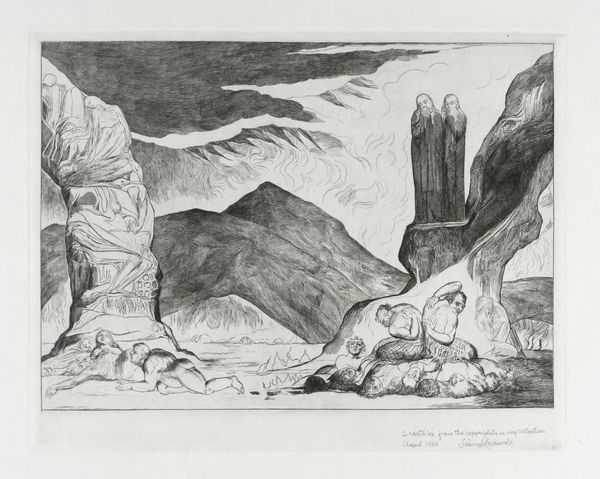
Dimensions: support: 372 x 527 mm
Copyright: CC-BY-NC-ND 4.0 DEED, Photo: Tate
Editor: So, this is William Blake’s "The Pit of Disease: The Falsifiers" from the Tate Collections. The watercolor evokes a sense of despair, and the figures seem trapped within a desolate landscape. What compositional elements stand out to you? Curator: Note the stark contrast between the figures and the landscape, achieved by the light washes of colour against more defined lines. How do you interpret the positioning of the figures, some isolated, others intertwined? Editor: It seems like each pose represents a different level of suffering or isolation. Curator: Precisely. Consider also how the colour palette contributes to the overall sense of unease. The blues and greys juxtaposed with flashes of red evoke a feeling of torment. Editor: I see that now, it’s almost like the landscape is mirroring the figures’ internal struggles. Curator: Indeed. Blake’s use of colour and form creates a powerful visual representation of spiritual and moral decay. Thank you, it has highlighted the dynamic relationship of the pictorial field. Editor: Thanks, I’ll never look at Blake the same way again.
Comments
tate 6 months ago
⋮
http://www.tate.org.uk/art/artworks/blake-the-pit-of-disease-the-falsifiers-n03362
Join the conversation
Join millions of artists and users on Artera today and experience the ultimate creative platform.
tate 6 months ago
⋮
Dante and Virgil have arrived at the circle of Hell inhabited by ‘falsifiers’ such as forgers. They are tormented by numerous diseases. Blake used a red lake, probably brazilwood, and a gritty vermilion red to show the flames of Hell. These pigments have very different working properties, and are not easy to use in thin washes in gum medium. He preferred to use vermilion whenever a blood red or a living flesh tone was required. Here he has used it for parts of the diseased bodies of the two falsifiers at the right, which are raw with scratching. Gallery label, August 2004
